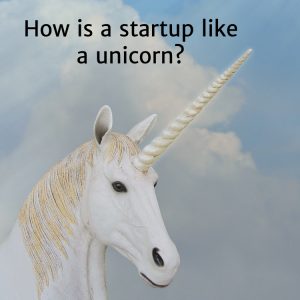
What does the gin represent in T. S. Eliot’s The Cocktail Party? How about the water?
Questions like these torment students of literature. As an English major in college, I dedicated many brain cycles to analyzing figurative language in fiction: similes, metaphors, imagery, etc.
Little did I know that the study of figurative language would be useful after graduation, when writing about technology.
Nonfiction Writers Need Metaphors
If you write nonfiction – and especially if you write about dry, technical topics – brush up your metaphors. They make your work more effective by waking up the reader.
For this post, I’m going to focus on the big gorilla of figurative language, the metaphor. (See what I did there, using gorilla as a metaphor?)
For anyone needing a refresher, a metaphor is a figure of speech that claims two things are the same when, taken literally, they are not.
In Shakespeare’s As You Like It, Jacques exclaims: “All the world’s a stage, and all the men and women merely players.”
A simile explicitly points to the comparison, often with the words like or as. Rephrased as a simile, the Shakespeare line would have gone: “All the world is like a stage, and all the men and women are like players…”
Better accuracy, less impact.
The tech industry loves a good metaphor:
- The 800 pound gorilla
- Unicorns
We even use technologies as metaphors for other technologies: It’s Netflix for [industry to be disrupted.]
Why do we love them so? An effective metaphor works on the reader’s brain in two ways:
- Grabbing the reader’s attention with something unexpected, enlisting associative thought processes
- Improving comprehension and revealing meaning
Put differently: A metaphor is an unexpected truth.
The Cognitive Kick of a Metaphor
You’re reading along about businesses, and suddenly there’s a unicorn. Part of your brain stops for a moment: A unicorn? Aren’t we talking about privately-held companies?
A metaphor grabs your attention by claiming something that is clearly not true in a literal sense. Part of the brain (which may have been dozing off while reading about income statements) suddenly sits up and takes notice.
Metaphors force the brain to turn off cruise control and pay attention. The reader must engage other mental systems to make sense of what they have encountered.
The first time you read of a start-up described as a unicorn, what happened? Your brain quickly tried to sort it out, rummaging around to make sense of it.
You may have thought, “What do I know about unicorns? They have a single horn. They’re white. They are magical – and, of course, fantasy. Even in fantasy stories, they are extremely rare.”

Your visual systems kicked in the imagery, your memory furnished part of a Harry Potter story, and then you came up with a connection: perhaps these start-up valuations are too good to be true. Is that what the author is trying to say?
When writing about difficult or abstract topics, metaphors add variety and interest.
Much of a metaphor’s power comes from novelty. When used all the time, they become cliché. They longer catch your attention or reveal anything new. The metaphor becomes short-hand for past conversations or ideas – a useful abstraction, but no longer unexpected.
Take-away: To get someone’s attention, choose a fresh image – something that your target reader hasn’t necessarily encountered in this context before.
Remember, though, that one reader’s cliché is another’s fresh new insight. You and your colleagues may use a phrase repeatedly, but to someone unfamiliar with your domain, the image may require an explanation.
The Meaning Behind the Metaphor
Note that the unicorn metaphor might support several possible interpretations. Perhaps it means that these are truly magical companies, discovered only in moonlight by virgin investors. Perhaps they are exceedingly rare, or their virtues are fictional.
Those meanings may change over time.
According to extensive research (more accurately, a quick look on Wikipedia), the start-up unicorn metaphor originated with venture capitalist Aileen Lee, now of Cowboy Ventures. She used the term to define private startups valued over a billion dollars. At the time, these high-value startups were nearly as rare as unicorns.
Now, unicorns are trampling all over the tech industry. CBInsights’ real-time Unicorn Tracker tallies more than 200 such companies.
An effective metaphor illustrates an important truth. If its meaning is not immediately obvious, curiosity spurs you to read on and discover the underlying truth.
Take-away: Make sure the deeper truth of the metaphor is clear to the reader and that it fits what you’re trying to communicate. Don’t wait too long before explaining it. The half-life on a reader’s curiosity can be remarkably short.
Wield this Weapon With Care
The metaphorical image may connect to areas of the brain beyond the rational and sensory-processing frontal cortex. It may summon memories with positive or negative emotional associations or even trigger the “fight-or-flight” amygdala.
If you want to use a clown as a guiding metaphor, consider its potential impact on readers who have a deep-seated fear of clowns. (Find coulrophobia in Merriam-Webster – it’s a thing.)

Cultural differences may come into play as well.
Do you remembers when, after the September 11th attacks, President Bush spoke extemporaneously about a crusade against terrorism?
The word “crusade” probably help a specific, emotional meaning for him: a deep commitment, the joining of forces for a common cause. But to the countries of the Middle East, the word recalled the historical Crusades, retrieving an entirely different set of associations about deadly clashes in the name of religion and the onset of western imperialism.
The metaphor was counterproductive in the global context.
The right metaphor makes your writing more effective. When explaining nonfiction topics, metaphors can clarify essential points and make them memorable. But wield metaphors with care, as they can inflict unintentional damage.